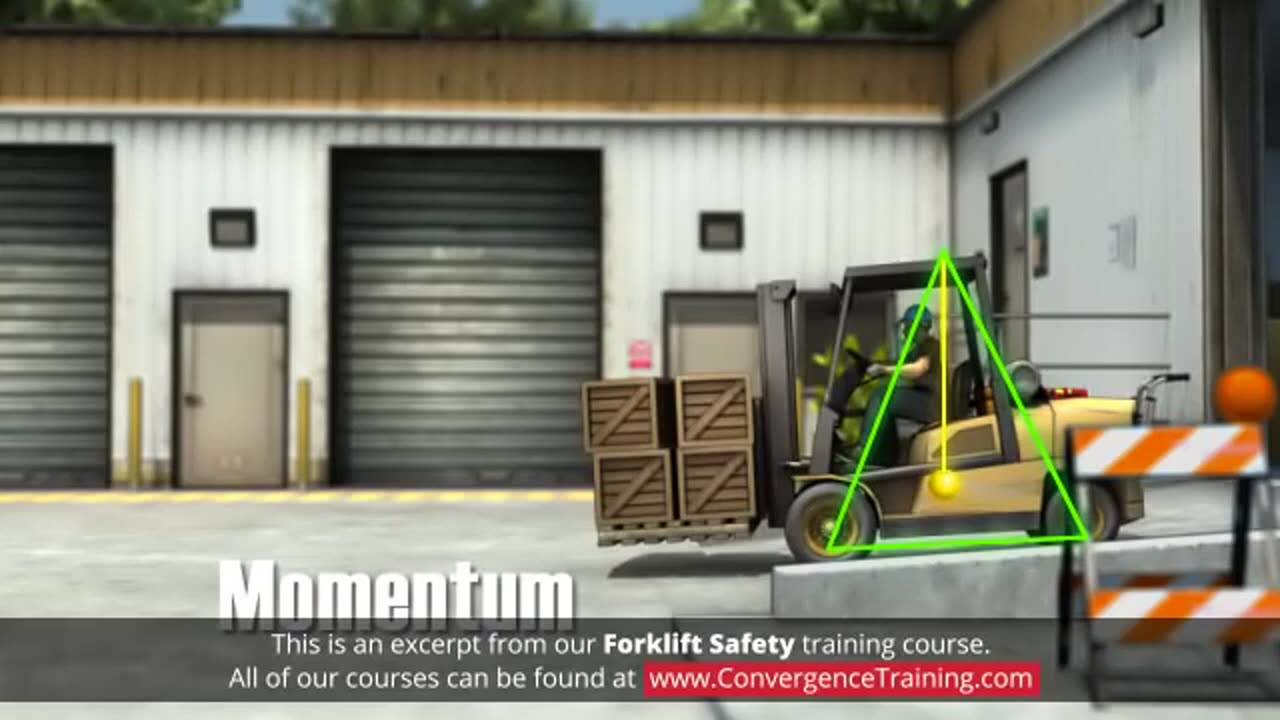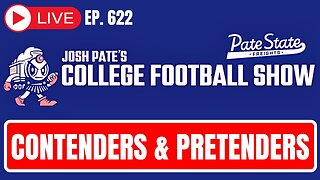Premium Only Content

Forklift Safety for Canada
### **Forklift Safety for Canada**
Forklifts are essential pieces of equipment in many workplaces, but they also pose significant hazards if not operated safely. In Canada, forklift safety is governed by **Occupational Health and Safety (OHS) regulations**, which are enforced at both the federal and provincial/territorial levels. The **Canadian Standards Association (CSA)** and **Workplace Safety and Insurance Board (WSIB)** also provide guidelines and recommendations to ensure forklift operations are carried out safely.
Here’s a comprehensive overview of forklift safety requirements in Canada:
---
### **1. Regulatory Overview**
#### **Canada Labour Code (CLC)**
For federally regulated workplaces, the **Canada Labour Code (CLC)** under **Part II – Occupational Health and Safety** outlines general safety requirements for operating forklifts. It emphasizes the responsibility of employers to ensure safe working conditions for employees.
#### **Provincial and Territorial Regulations**
Each province and territory in Canada has its own OHS regulations that govern forklift operations. For example:
- **Ontario**: The **Occupational Health and Safety Act (OHSA)** and **Regulation 851 (Industrial Establishments)**.
- **Alberta**: **Alberta OHS Code** for industrial and construction workplaces.
- **British Columbia**: **WorkSafeBC** has specific guidelines for powered industrial trucks.
Employers must adhere to the regulations specific to their jurisdiction, but the general principles of forklift safety are consistent across Canada.
---
### **2. Operator Training and Certification**
One of the most crucial aspects of forklift safety in Canada is proper training. Operators must be trained and certified before they are allowed to use forklifts in the workplace.
#### **Training Requirements**
- **Forklift Training Programs**: Operators must complete a formal training program that includes both theoretical and practical components. These programs cover safe operating procedures, hazard recognition, and emergency response.
- **Certification**: Upon completion of the training program, operators must be **certified** to operate forklifts. Certification must be renewed periodically, and operators should undergo refresher courses to keep their skills up-to-date.
- **Training Content**: Operators should learn about:
- Pre-operational inspections.
- Load handling and balancing.
- Safe operation in various environments (e.g., tight spaces, ramps).
- Proper stacking and unstacking of loads.
- Handling hazardous materials.
#### **Employer Responsibilities**
- Employers are responsible for providing proper training and ensuring that operators are competent.
- Employers should also ensure that forklift operators follow **safe work practices** and perform regular maintenance and inspections on equipment.
---
### **3. Pre-Operational Inspection**
Before operating a forklift, operators must conduct a pre-operational inspection to ensure that the equipment is in safe working condition.
#### **Key Checks Include**:
- **Visual Inspection**: Look for signs of damage, leaks, or wear on the forklift.
- **Brakes**: Ensure the brakes are working properly.
- **Tires**: Check for proper tire pressure and signs of damage.
- **Forks**: Inspect forks for cracks or damage.
- **Hydraulics**: Ensure that the hydraulic system is functioning properly.
- **Warning Devices**: Check that horns, lights, and alarms are in working order.
If the forklift does not pass the inspection, it should not be used until repairs are made.
---
### **4. Safe Operation Practices**
#### **Load Handling and Stability**
- **Load Capacity**: Always adhere to the manufacturer’s guidelines regarding the maximum load capacity. Overloading a forklift can lead to tipping or loss of control.
- **Load Balance**: Ensure that loads are properly balanced and that the load center (distance from the forklift’s front axle to the center of the load) is appropriate.
- **Stacking**: When stacking loads, ensure they are stable and arranged to prevent tipping.
#### **Driving Safety**
- **Speed**: Always drive at a safe speed. Speed limits may be set by the employer, and operators should adjust their speed based on the workplace conditions.
- **Turns and Corners**: Slow down when making turns. Sharp turns at high speed can cause the forklift to tip over.
- **Pedestrian Safety**: Always be aware of pedestrians. Use warning signals (horns, flashing lights) and ensure that pedestrians are aware of forklift movements.
#### **Use of Seatbelts**:
- **Seatbelts** should always be worn while operating a forklift, as they are a critical safety feature in case of a tip-over.
---
### **5. Forklift Safety in Specific Environments**
#### **Ramps and Slopes**
- Forklifts should always travel **uphill with the load facing up** and **downhill with the load facing down** to prevent the load from tipping over.
- **Speed Control**: Travel at a reduced speed when going up or down ramps to maintain control of the forklift.
#### **Elevated Work**
- When operating a forklift at elevated heights (e.g., using a lift to stack pallets), operators must ensure that the load is properly secured and that the forklift is on stable ground.
#### **Forklift in Narrow Aisles**
- When working in narrow aisles, operators should take extra care to avoid collisions with shelves or other obstacles. It may be necessary to use spotters in particularly tight spaces.
---
### **6. Forklift Maintenance**
Regular maintenance is critical for ensuring forklift safety.
#### **Maintenance Tasks Include**:
- **Regular Inspections**: Conduct routine maintenance as outlined by the forklift manufacturer.
- **Lubrication**: Lubricate moving parts to ensure smooth operation.
- **Battery Maintenance**: For electric forklifts, check and maintain the battery regularly to ensure proper function.
- **Repairs**: Any mechanical problems should be addressed immediately. Forklifts should be taken out of service if repairs are needed.
---
### **7. Safe Parking and Shutdown Procedures**
When a forklift is not in use, it should be parked in a designated, safe area. Key steps to ensure safe shutdown include:
- **Lower the Forks**: Always lower the forks to the ground when parking.
- **Key Removal**: Remove the ignition key to prevent unauthorized use.
- **Parking Brake**: Engage the parking brake to prevent the forklift from rolling.
- **Warning Signals**: Ensure that the forklift’s warning signals (e.g., lights or alarms) are functioning when parking in high-traffic areas.
---
### **8. Accident and Incident Reporting**
All forklift-related accidents and near-miss incidents should be reported and investigated to prevent future occurrences. Employers should have a clear process for reporting, investigating, and addressing safety issues.
---
### **Conclusion: Ensuring Forklift Safety in Canada**
Forklift safety is a shared responsibility between employers, operators, and workers. By following regulatory requirements and industry best practices, Canadian workplaces can significantly reduce the risk of accidents and injuries. Key elements of a comprehensive forklift safety program include proper training, pre-operational inspections, safe operating practices, regular maintenance, and an emphasis on workplace safety awareness.
-
 7:58
7:58
HSESafetyInformation
1 month agoAuthentic Peshawari Rosh _ Namkeen Gosht Recipe __ Traditional KPK and Baluchistan
581 -
 LIVE
LIVE
EuphioniaStudio
1 hour agoIt's BAAAASED, MARIO! | Mario Party 4
8 watching -
 LIVE
LIVE
ADH Gaming
3 hours agoWarzone Kar98 Iron sight Quick scopes
8 watching -
 LIVE
LIVE
Adam Does Movies
10 hours ago $0.98 earnedAll The Big Movie Announcements From CinemaCon 2025- LIVE!
185 watching -
 1:07:30
1:07:30
Josh Pate's College Football Show
3 hours ago $0.50 earnedBig CFB Changes Coming | USC + Texas + Alabama In 2025 | Truth About Officiating | I Am Engaged
10.3K1 -
 4:43:40
4:43:40
Biscotti-B23
6 hours ago🔴 LIVE VIEWERS VS MEMBERS BEEF 🔥 FINDING A NEW MAIN ⚔ BLEACH REBIRTH OF SOULS
1.16K -
 LIVE
LIVE
DTDUBtv
3 hours agoOUTLAST TRIALS WITH SARAHSLOTH17
133 watching -
 LIVE
LIVE
Major League Fishing
5 days agoLIVE! - MLF Bass Pro Tour: REDCREST - Day 4
8,772 watching -
 LIVE
LIVE
EricJohnPizzaArtist
3 hours agoAwesome Sauce PIZZA ART LIVE Ep. #42: It’s Cartman!
250 watching -
![[Vtuber] Black Ops 6 warzone and mp! Ep.2](https://1a-1791.com/video/fww1/68/s8/1/z/v/X/z/zvXzy.0kob-small-Vtuber-Black-Ops-6-warzone-.jpg) LIVE
LIVE
Ryker SteelVT
3 hours ago[Vtuber] Black Ops 6 warzone and mp! Ep.2
33 watching